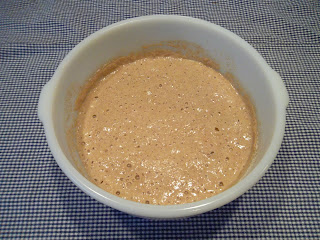As mentioned in an earlier post, both of my grandmothers grew up in areas where dairy farms formed a large part of the economy as well as the landscape. In Grandma VandenBergh’s native country, if you imagine a million and a half cows grazing in grassy fields, you will have a mental picture of the Dutch countryside today.
 |
| Dutch Dairy Farm |
And if you imagine that each cow produces an average of 8,000 kilograms of milk each year, that’s a lot of milkshakes, yogurt, butter, powdered milk, and cheese, as well as plain liquid milk. In all, the Dutch dairy sector provides about 57,000 jobs, caring for the cows and processing the milk produced by these placid bovines.
The cows pictured above graze tranquilly on one of the Netherlands’ 20,000 dairy farms. The dominant breed of dairy cow in the Holstein Friesian, a descendant of the Friesland Holland cows and bulls that have been exported to North America since the mid-19th century. In fact, it was almost certainly a Friesian Holstein that Grandpa VandenBergh walked home from Castleton to Albany in the family’s early years in America.
 |
| Barn in Dutch Countryside |
I found a recipe in Grandma VandenBergh’s cookbook that calls for warm milk. I can picture her using milk produced by “Baasje” to prepare this typical Dutch recipe for pancakes for her family of growing children:
Drie in de pan (“Three in the Pan”: so called because you make the pancakes just the right size to fit three in your frying pan at once)
- 2 cups (250 grams) whole wheat flour
- 2 ½ tablespoons (15 grams) powdered yeast
- 3 ½ tablespoons ( 50 grams) vegetable oil or butter
- 1 ¼ cups (about 3 dL.) warm milk
- ½ teaspoon ( 3 grams) salt
- 1/3 cup (50 grams) currants
- 1/3 cup (50 grams) raisins
- ¼ cup (25 grams) candied fruit peel
(I was unable to find candied fruit peel in my local grocery store, so I added a half teaspoon of cinnamon to make up for that omission.)
 |
| Ingredients for "Drie in de Pan" |
- Dissolve the yeast in 2 tablespoons of warm milk.
- Make a fairly stiff batter with the flour, salt, and the rest of the milk.
- Rinse the raisins and currants in warm water; add them to the batter along with the yeast mixture.
- Cover the bowl with a towel and let it rise for an hour in a warm place.
 |
| The batter after rising for one hour |
- Heat oil or butter in a frying pan or skillet. (I used cooking spray; you may need to spray the pan each time you add more batter.)
- Using a soup ladle, pour the batter into the pan so as to make three round or oval pancakes, and cook until golden brown, turning over once. (Turn over when edges become browned and bubbles form on top.)
 |
| "Drie in de Pan" in the pan |
- Serve with syrup or brown sugar.
 |
| "Drie in de Pan" on the platter |
That is the basic recipe from Grandma VandenBergh’s 1922 cookbook. It makes a pleasant “comfort food” for brunch on a chilly January day. I found a very similar recipe in a modern Dutch cookbook that I purchased in the gift shop at the Rijksmuseum in Amsterdam last summer. This updated version calls for self-rising flour, which was probably not invented yet in Grandma’s time, as well as for an egg, which may make for a richer batter. But the basic recipe is the same, right down to the currants and raisins.
Eet smakelijk!
Sources:
Dutch Dairy Board – Dutch Dairy Sector – July 2011: http://www.prodzuivel.nl/Engels/DutchDairysector.pdf Accessed 1/22/2012.
Sterke, Marike. Deliciously Dutch: Text and Recipes. Arnhem, Netherlands: Terra, 2008.
Wittop Koning, Martine. Eenvoudige Berekende Recepten. Rotterdam, Netherlands: Boekdrukkerij N.V. W. Hilarius Wzn. 1922.
No comments:
Post a Comment
Note: Only a member of this blog may post a comment.